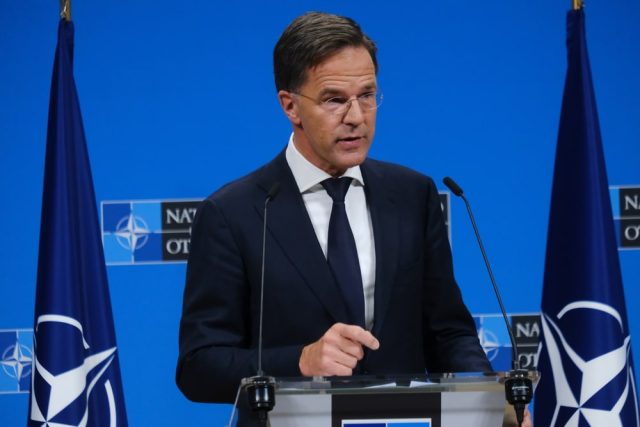
The NATO Summit in The Hague on June 24 had a turbulent prologue even before its official opening. President Donald Trump, during his trip to the Netherlands aboard Air Force One, made statements that shook the balance of the Alliance. Commenting on Article 5 of the North Atlantic Treaty — the cardinal principle of collective defence — Trump insinuated that its application could be “interpretable”, casting doubt on one of NATO’s most stable foundations. Article 5, an integral part of the 1949 Washington Treaty, establishes that an armed attack against one or more members will be considered an attack against all. It has been invoked only once in the history of the Alliance, following the attacks of September 11, 2001. Trump’s outburst sparked a wave of concern among allies, prompting him to partially correct his words, admitting that Air Force One was not the right place for such delicate clarifications.
NEW SPENDING TARGETS AND US MORAL SUASION
A central theme of the summit was the US proposal to increase defence spending to 5% of national GDP for each member country by 2035. This figure should be divided between 3.5% to be allocated to defence in the strict sense, and 1.5% to be used for related infrastructure spending. This proposal has provoked mixed reactions. The European Commissioner for Trade, Valdis Dombrovskis, warned against the risk of “defence washing”, i.e. the tendency to include expenditure items that are not strictly relevant under the category of defence. In this sense, Trump’s moral suasion has proved pervasive and divisive, bringing to light the internal tensions within the Alliance on what the priorities and criteria are for evaluating the commitment of individual states.
THE POSITIONS OF THE MAIN EUROPEAN LEADERS
In the context of the summit, an axis between France, Germany and the UK has formed looking to guide the discussion. British Prime Minister Keir Starmer confirmed the United Kingdom’s commitment to reaching the 5% spending target, using a calculation system that adds together the defense budget and the national security budget. German Chancellor Friedrich Merz called the summit “historic”, underlining Berlin’s willingness to invest substantially in common defense. In a joint editorial with French President Emmanuel Macron, published on the Financial Times, the two leaders highlighted how the main threat to European security comes from a “revisionist Russia”, reiterating the importance of nuclear deterrence and increased military investment. France and Germany, currently spending above 2% of GDP on defence, have said they intend to push it up to 3.5%, adding a further 1.5% for broader spending.
A FRAGILE BALANCE BETWEEN AMERICAN PRESSURE AND EUROPEAN COHESION
Trump’s return to the scene has brought to light tensions between the United States and some European partners, especially in relation to the division of the financial burden within the Alliance. Trump has forcefully claimed the role he had played during his previous administration in increasing the contributions of the allies, arguing that NATO was “on the verge of failure” and stating that the 5% threshold represents an adequate value to guarantee the power and functionality of the Alliance. In the meantime, Macron has sought a rapprochement, meeting Trump in a more informal context during a dinner, while NATO Secretary General Mark Rutte has attempted to mediate, praising Trump in a private message later made public. However, this gesture has not been well received by some European chancelleries, who view unilateral concessions to the United States with suspicion.
INTERNAL DIVISIONS AND THE ROLE OF RUSSIA
The summit took place against the backdrop of the now prolonged conflict in Ukraine and a renewed assertiveness of Russia in the Eurasian space. Rutte called for the adoption of a final communiqué in support of Kiev, and the United States resumed sharing intelligence information with other members, an important sign of cohesion and solidarity. However, internal divisions remain. While the Nordic countries said they were in favor of increasing spending, Spain expressed strong opposition to the 5% target, deeming it unsustainable. This contrast reflects the difficulty of reconciling the different economic capacities and political priorities of the 32 Member States.
AN ALLIANCE THAT SEEKS NEW COHESION
The NATO summit in The Hague marked a crucial step for the future of the Atlantic Alliance. The meeting highlighted on the one hand the determination of some countries to strengthen the common defensive capacity, while on the other the growing complexity of maintaining a united front in the face of internal and external challenges. Trump’s words and proposals have reopened old fractures, but have also forced the Alliance to openly confront the problem of the economic and strategic sustainability of collective defence. In an unstable geopolitical context, NATO is faced with the need to reformulate its role, making itself more coherent in its means and ends. The Hague Summit did not resolve all the contradictions, but it made it clear that the balance of the Alliance can no longer be based only on automatisms and habits: it is time for concrete and shared political choices.



 Subscribe
Subscribe